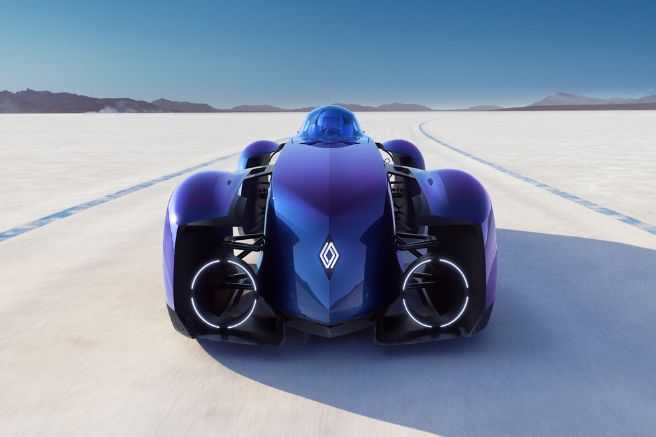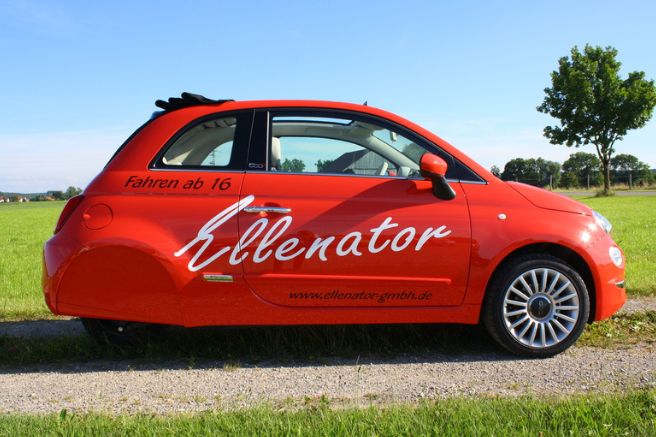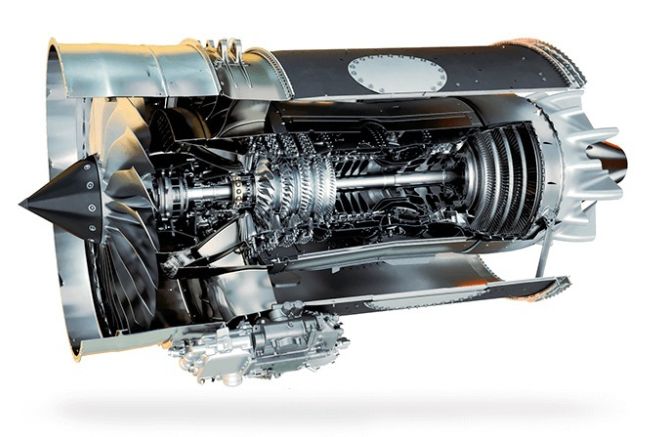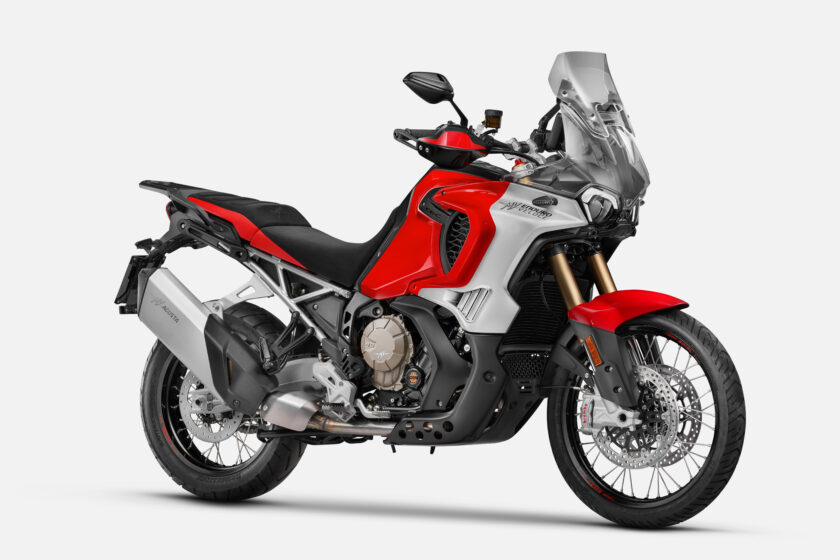
In 2023, street enduro motorcycles have proven to be the best-selling models on the market. So much so that, out of the ten best-selling motorcycles, eight are enduros. In fact, it’s eight and a half, as in third place, behind the Benelli “Trk 502” and Honda “Africa Twin,” is the Yamaha “Tracer 9,” which straddles between street enduro and touring bike. This trend makes it inevitable for major manufacturers to maintain a presence in this segment with at least one model, and has even prompted MV Agusta, a brand traditionally closer to racing and asphalt, to develop its own product. It’s called the “Lxp Enduro Veloce,” and it’s a motorcycle that completes a development process that began in recent months with the introduction of the “Lxp Orioli” enduro, sold in a limited edition and equipped with a specially developed engine.
As the name suggests, the new model shares much with its predecessor, starting with the aesthetic lines that fully mirror those of the “Orioli” version. It features significant front fairings and windshield that enhance rider protection, minimize air resistance, and direct airflow toward the radiator to improve cooling. The most interesting new feature is the engine. For the “Lxp” models, the Schiranna company has developed an entirely new unit in terms of the block while maintaining the traditional inline three-cylinder architecture present in other MV Agusta models.
MV Agusta “Lxp Enduro Veloce” Specifications
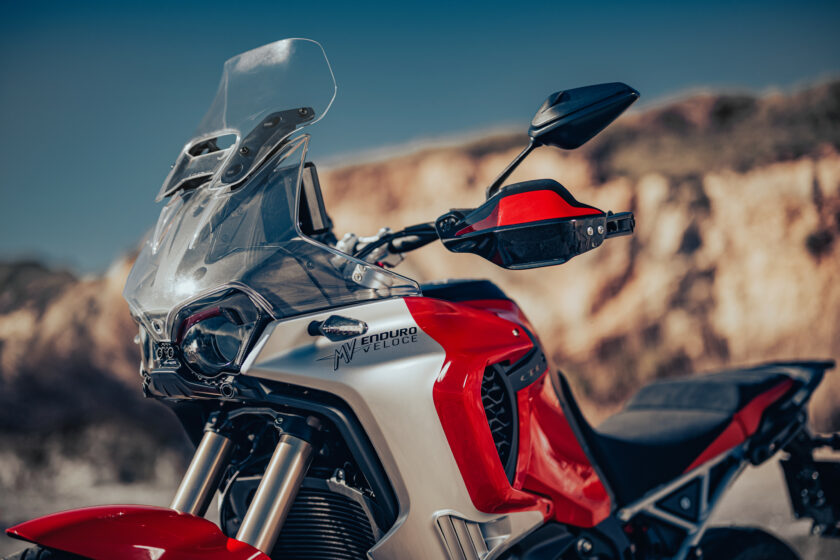
The engine displacement has increased from 798 cc to 931 cc, achieved with 81 mm bore cylinders and a stroke of just over 60 mm. Inside work lightweight pistons and four valves per cylinder, driven by a double overhead camshaft interfaced with carbon-coated “dlc” bucket tappets to improve mechanical resistance and reduce friction. These characteristics, along with a ride-by-wire throttle body with a 47 mm diameter and a compression ratio of 13.5:1, enable the unit to deliver a maximum power of 124 horsepower, with a specific power of 133 hp per liter, at 13,000 rpm and 102 Nm of torque at 7,000 rpm. The torque curve shows that 85% of the maximum performance is already reached at 3,000 rpm, indicating great flexibility. Additionally, the integrated ignition-injection system “Mvics 2.1” features three injectors and spark plugs with “ion-sensing” coils, a technology that uses the spark plug as a sensor for current flow between electrodes during post-combustion.
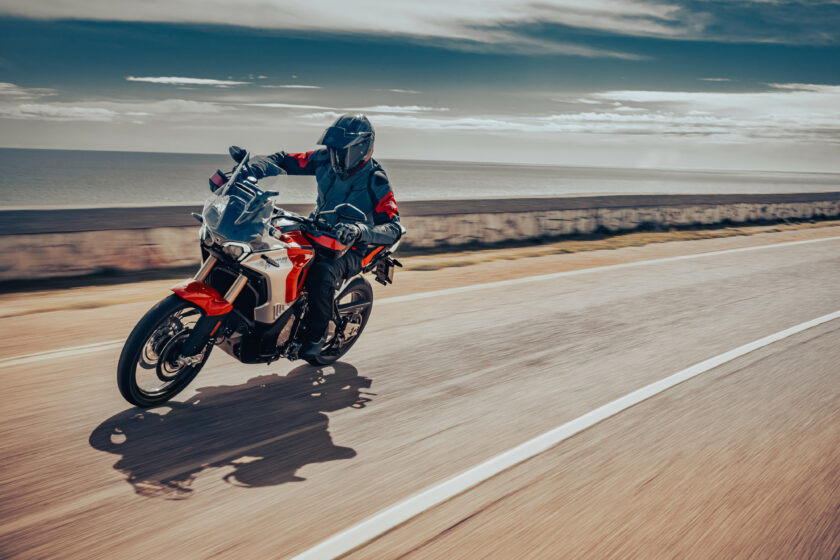
This feedback control improves combustion efficiency in near real-time, preventing detonations and misfires. Other notable features include the counter-rotating crankshaft, a solution shared with Ducati’s “V4” units, which enhances agility by mitigating the gyroscopic effects of the wheels. The engine pairs with a six-speed gearbox operated via a hydraulically controlled multi-plate wet clutch with an anti-hopping system. The entire unit is extremely lightweight, weighing just 57 kg, resulting in a power-to-weight ratio of over two hp per kilogram, and compact in both transverse and longitudinal dimensions. The engine is mounted in a double cradle frame with an aluminum alloy front swingarm, supported by Sasch suspension both front and rear. The front features 48 mm diameter inverted forks with 210 mm of wheel travel, while the rear has a mono-shock driving a progressive suspension, also allowing 210 mm of wheel travel. The braking system is provided by Brembo, with 320 mm diameter floating front discs and a dual-piston rear caliper with a 265 mm disc.
Dedicated Electronics
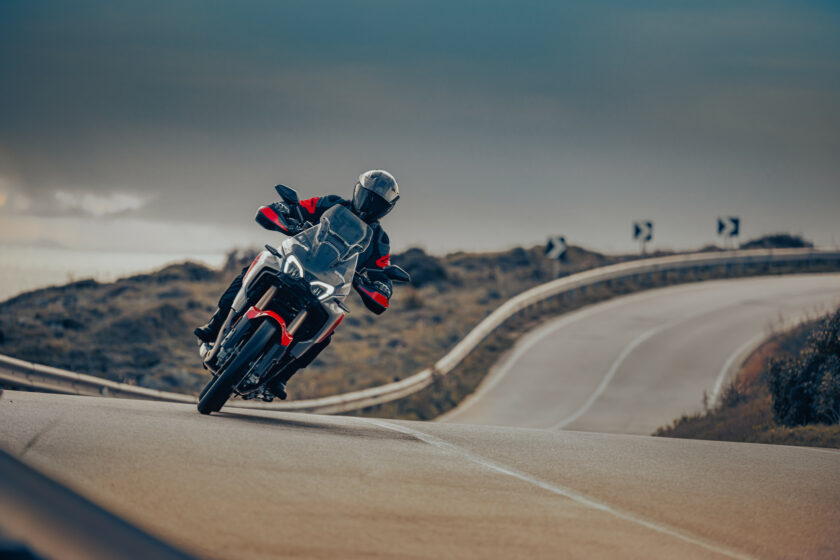
The engine control unit offers four different tuning maps, along with an eight-level traction control system—five for road use, two for off-road, and one for wet conditions—advanced by an attitude sensor. Additionally, it’s possible to adjust the electronics’ response based on the tires used, whether for road or off-road, and to choose between two different engine brake modulations. The ABS response is also adjustable on two levels, with one specifically for off-road or track progression. A launch control is also available, allowing acceleration to 100 km/h in 3.72 seconds.

